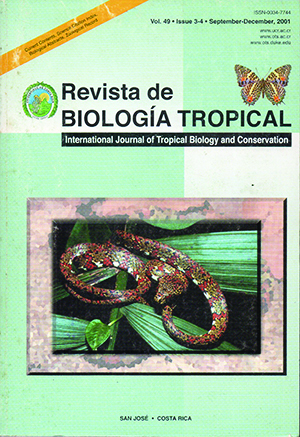Abstract
Size and fecundity observations of pea crab (Juxtafabia muliniarum) from the paleal cavity of the oyster Saccostrea palmula were made from May 1998 to May 1999. Infestation frequency was 18.52 % in a sample of 540 oysters. Of 136 pea crabs, 36 % were couples, 60 % were single females and 4 % were single males. The mean caparace length of J. muliniarum was 5.6 ± 0.74 mm (range 4.0 to 7.6 mm) for females and 2.71 ± 0.60 mm (range 1.6 to 4.0 mm) for males. The mean weight was 0.180 ± 0.084 g (range 0.06 to 0.4g) for females and 0.011 ± 0.003 g (range 0.01 to 0.02 g) for males. Ovigerous females (43.75 % of all females) were found in all months. The caparace length – fecundity relationship was F = 3904.6 Ln (Lc) – 4651.1. The caparace length-weight relationship was P = 6 x 10-4 Lc3.2122. The mean sex-ratio was 1.0 male: 2.4 females. Saccostrea palmula infected only by females was the dominant group (60.78 %). This mollusk is a new host record for the crab.##plugins.facebook.comentarios##

This work is licensed under a Creative Commons Attribution 4.0 International License.
Copyright (c) 2001 Revista de Biología Tropical
Downloads
Download data is not yet available.


